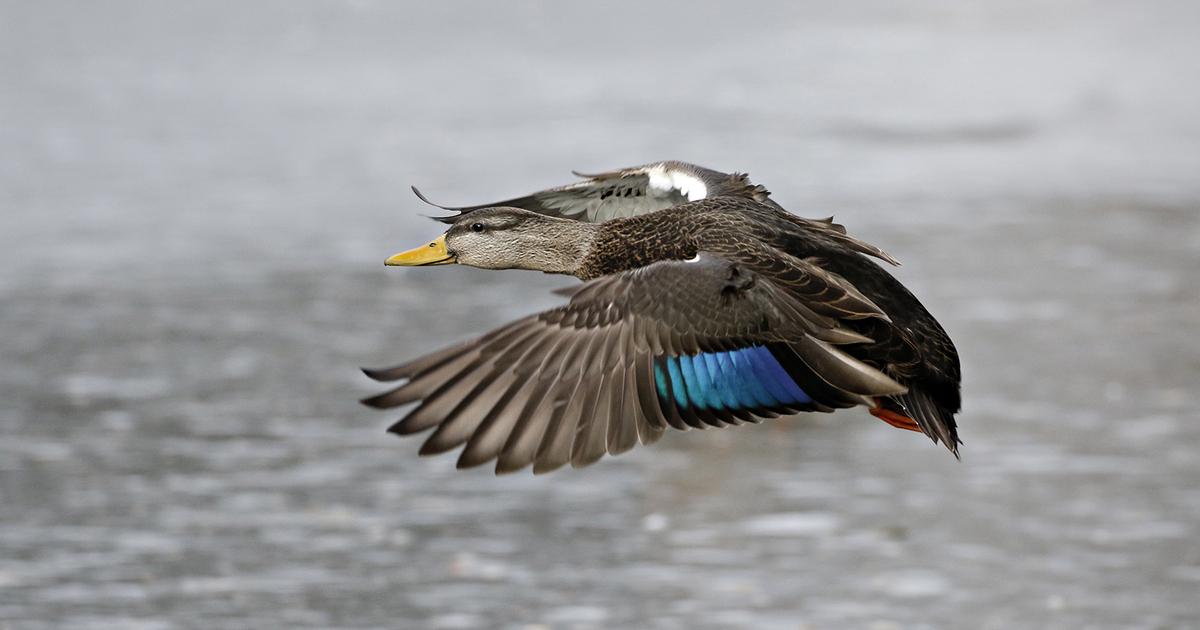Migration Alert: New Jersey, Delaware Hunters Reporting Improving Numbers
Dec. 20, 2023 – Atlantic Flyway – New Jersey and Delaware
Dec. 20, 2023 – Atlantic Flyway – New Jersey and Delaware

The Mid-Atlantic was battered last weekend by a hefty storm that resulted in flooding from North Carolina to New England. The rain is mostly welcome after a dry autumn, but the inundation coupled with temperatures that tend to seesaw between balmy and frigid have some waterfowlers guessing.
Ted Nichols, wildlife biologist with the New Jersey Bureau of Wildlife Management, says "crazy rainfall" in the last two weeks has resulted in "surface water everywhere," resulting in dispersed inland ducks, and the relatively warm weather is likely to keep things that way for at least another week. The good news, Nichols observes, is that hunters who access mostly private upland fields are likely to get some good near-term hunts on those flooded fields before the standing water percolates into the soil.
Nichols says New Jersey saw a decent push of big ducks last week and green-winged teal are still around. "Some Canada geese came in with that last front," he adds, "but it seems as though there should still be a big push to come. Hunters on the coast are doing well with bufflehead."
Michael Randall, DU's biologist for Maryland, Delaware and West Virginia, says he saw high-flying geese last week while returning from a trip to southern New England. "We drove back during that cold front last week with some snow fall further north and saw good numbers of high-flying birds, mostly Canada geese, as we drove through states like New York," Randall says.
Ed Farley, DU's manager of conservation programs in the Chesapeake region, recently scoped out eastern Delaware, spotting good numbers of greenwings and a few black ducks, plus some other dabblers. He said he's also heard others reporting good numbers of teal. "It's been a few weeks since I’ve been to New Jersey, but the last time I was there, there was an abundance of black ducks in the coastal zone marsh. I saw a few teal as well. I didn't get out to the open bays to observe divers, but I would suspect they'd start coming in with these cold snaps we've had."
Delaware Division of Fish and Wildlife Migratory Gamebird and Turkey Biologist Adam Macy shared numbers collected during Delaware's most recent aerial survey of wetlands. The December 8 survey showed Delaware hosting nearly 8,000 wintering black ducks, 5,000 mallards, and 6,000 green-winged teal. Most of these birds were found in both public and private wetlands and tidal marshes in Kent County. Another 800 blue-winged teal, 1,600 gadwalls, 2,000 shovelers and 2,300 pintails were counted in Delaware’s core survey area in coastal wetlands of Kent County and northern Sussex County. New Castle County remains light on dabbling ducks but as of early December still held the greatest concentration of Canada geese in Delaware as the state's second and final migratory Canada Goose hunting season split began last Saturday.
Macy says the recent heavy rains helped recharge wetlands, increasing the potential for wintering waterfowl to access food resources over the next few weeks. Emergency repairs to state-owned impoundments in Kent County have most areas open to hunter access, he adds. Species such as bufflehead, scoter, scaup, and long-tailed ducks are arriving in greater numbers. Macy says hunters can check out Delaware's aerial survey zones and waterfowl counts at www.dnrec.delaware.gov/fish-wildlife/hunting/waterfowl-surveys.
Stay up to date with the latest migration information.